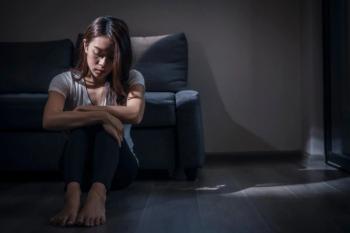
- Vol 37, Issue 6
- Volume 37
- Issue 6
The Future of Telepsychiatry
How can telepsychiatry improve quality and access to care as well as reduce physician burnout? Telepsychiatry pioneers joined Chris Aiken, MD to discuss tips and tricks in making it work for you.
How can telepsychiatry improve quality and access to care as well as reduce physician burnout? Telepsychiatry pioneers Peter Yellowlees, MMBS, MD, Chief Wellness Officer at
Using the right tools
There are a number of tools that can make telepsychiatry easier for the clinician, said Yellowlees, who authored on the 2009 telemental health guidelines. A noiseless keyboard, for example, will make it easier to take notes during a session without disrupting the flow of the conversation. This, in turn, makes post-appointment paperwork quicker and easier. Similarly, an echo-cancelling microphone improves audio quality.
Yellowlees also likes to use multiple screens during telepsychiatry sessions. “I have one screen for the video, I have another screen to the EMR, and I typically have my email or something else going on the third screen,” he explained. “And it’s actually less tiring to have two or three screens, because you don’t have to constantly change the picture, or change the shape of your screen as you’re doing different functions; you literally use each screen for a different function. And that’s a much, much easier way of working.”
Choosing an appropriate telepsychiatry platform is also important. Despite the flexibility during COVID, both Shore and Yellowlees noted it is best to use platforms that are HIPAA-compliant. “You know, the government can easily change the rules and decide they want to come and prosecute people [for not being HIPAA-compliant].”
Choosing a HIPAA-compliant platform now will allow for a seamless transition in a post-COVID world. Just as it may take time for clinicians to learn new platforms, patients may have a similar adjustment period. Since the rules will likely change after the COVID crisis, they added, it makes sense to acclimate your patients to something you can use moving forward.
Creativity and flexibility
The speakers agreed that telepsychiatry requires a degree of flexibility and creativity. For instance, psychiatrists should aim to be more animated during a telepsychiatry visit, Yellowlees noted. “I normally say to people to be about 110% of normal—just slightly more lively, slightly more intonation in your voice. . . . And, that may be why some people also find telepsychiatry a little bit more tiring initially, because they’re actually having to speak and enunciate more loudly and more carefully.”
Similarly, clinicians may need to ask patients to be more creative. For example, clinicians can ask patients to weight themselves or use a blood pressure monitor during the video visit, sincemany of the tools used to assess patients’ vital signs can be obtained inexpensively online.
Shore also had some suggestions for patients worried about their privacy. “One of the places that many of my colleagues and I have found useful is car therapy. When the car is not moving and the patient is not driving, it provides a private secure space,” he explained.
On the other hand,
This can be particularly helpful when doing therapy, explained Shore, Director of Telemedicine Programming for the Department of Psychiatry, University of Colorado Anschutz Medical Campus. “I think there’s a real power to move the treatment into the place where the patient lives.”
Telepsychiatry also allows for greater insights and ability to help patients with specific disorders. For instance, if you are working with someone with ADHD, you can see the state of their homes. In patients with eating disorders, clinicians can ask to see the pantry, and for patients with a hoarding disorder, you can monitor their progress as they sort through belongings.
Other special patient populations can also benefit from telepsychiatry, as it evens out the playing field and provides a more egalitarian approach. Patients with anxiety can meet with their physician in a more comfortable environment, which in turn allows them to share more freely. It also benefits children and adolescents, Aiken added. “It can be intimidating to be in an older doctor’s office when you’re an adolescent. In telepsychiatry, we are on their media—this is their domain, the electronic media, so they take it and run with it.”
A hybrid approach
According to the experts, the literature to date suggests very high levels of patient satisfaction, most likely due to its flexibility. It becomes easier for patients to show up for appointments, with minimal disruptions to their schedule.
The flexibility goes both ways. In the past, taking an extended vacation or attending a convention meant leaving your patients behind, finding coverage, and the like. With telepsychiatry, clinicians can schedule appointments around their travel schedules and leisure time.
Another perk of telepsychiatry is that patients may find it easier to divulge sensitive information. “There’s a big computer science literature showing that people tend to be more honest if they’re talking about sensitive topics to a computer, filling in a questionnaire, or to someone on video on a computer as opposed to in person,” Yellowlees said. “Imagine if you’re a female and you’ve been raped recently. It’s much easier to talk to someone like Jay or myself on video than to come into our clinics and see us there as sort of physically large males.”
With greater opportunities to connect with patients and high levels of patient satisfaction, all three experts agreed the future should consist of a balanced hybrid model as standard care.
“I tend to look at it like video and in-person visits, each has their own strengths and challenges, and it’s variable by the patient population,” Shore explained. “As Peter [Yellowlees] mentioned, I’ve worked with victims of domestic violence and see them first in video to establish a relationship where they feel safer and more comfortable. Now, there are other patients where you may want to see them in person first to establish the relationship, and then do video.”
“What I’m hearing is that in the hybrid model patients might feel more secure in their connection with us, knowing that they can reach us when they’re at the beach, when their car is broken,” Aiken said. “We just have to turn it up a bit, 110%, in our own attunement and energy involvement, and we can actually connect to patients in different ways.” ❒
For full coverage of the webinar and more information, visit us at
Questions? Email us at
Articles in this issue
over 5 years ago
Meeting Patients Where They Are: A Public Health Imperativeover 5 years ago
Prescribing Hope for Recoveryover 5 years ago
Stage-Specific Treatment of Psychotic Disordersover 5 years ago
Investing Tips in a Time of Crisisover 5 years ago
Talking to Pregnant Patients About Cannabis Useover 5 years ago
In Memoriam: Psychiatrists Who Are Coronavirus Casualtiesover 5 years ago
Immigrantover 5 years ago
Exploring Psychotropic Drug InteractionsNewsletter
Receive trusted psychiatric news, expert analysis, and clinical insights — subscribe today to support your practice and your patients.













